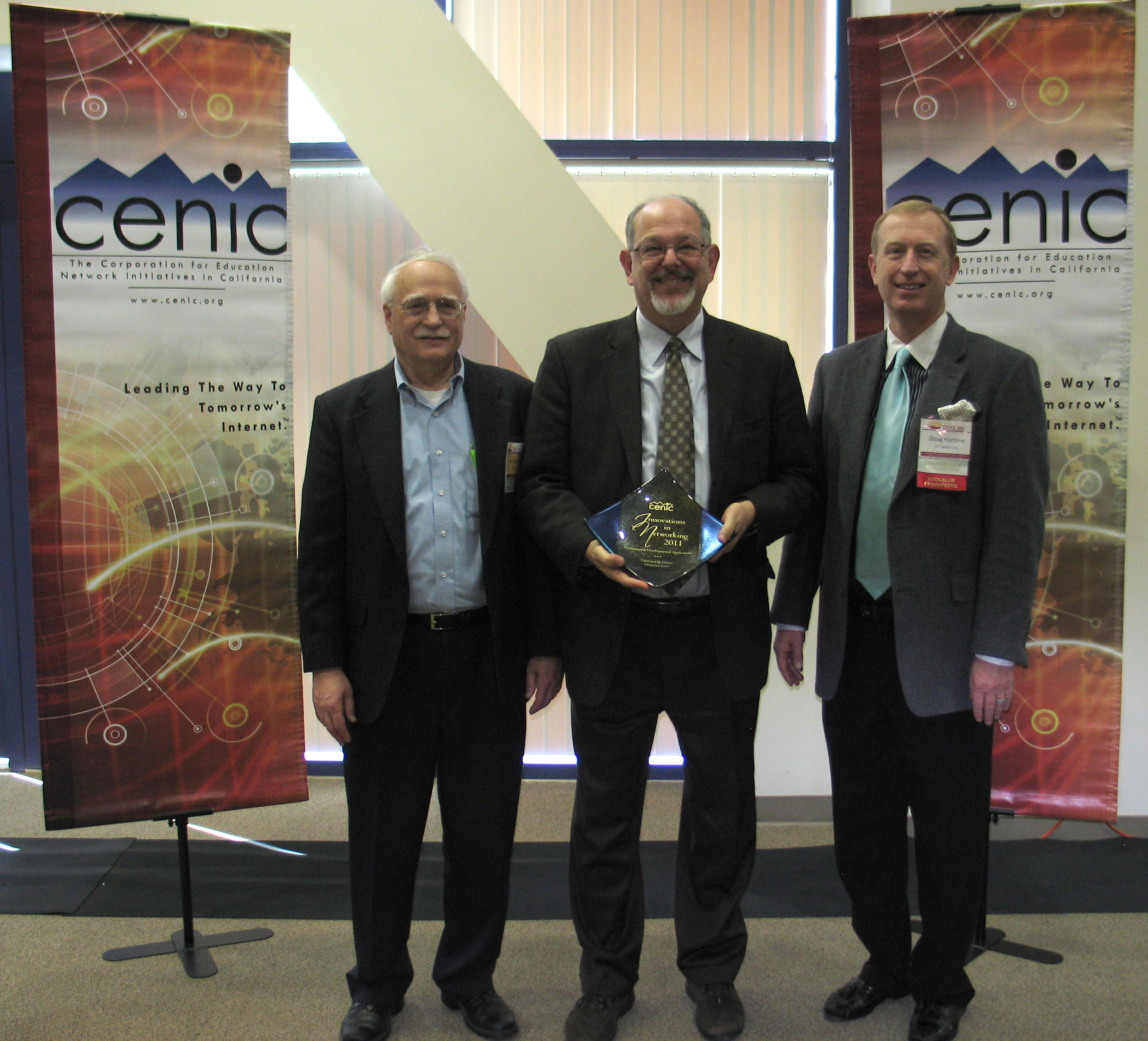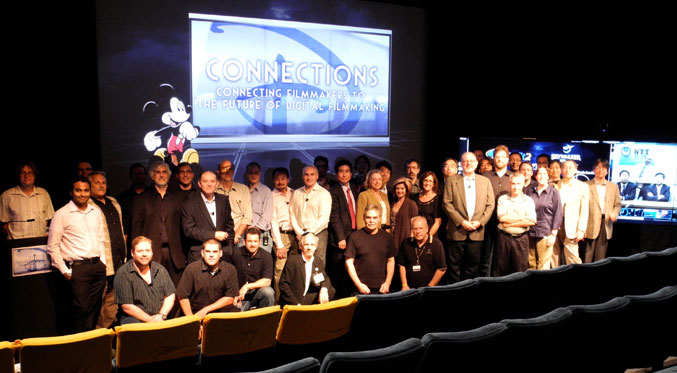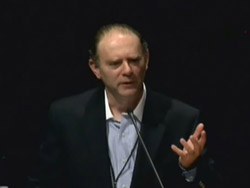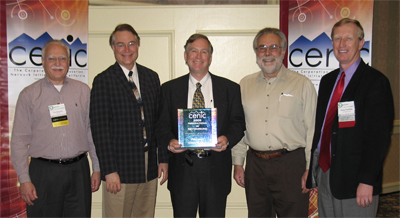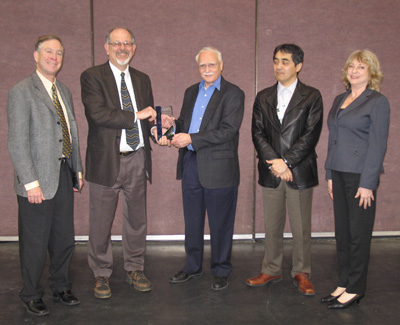Digital Cinema Project Honored for Innovation in Networking
San Diego and Irvine, CA, March 9, 2011 -- For the fourth year in a row and the fifth time in six years, a project involving the California Institute for Telecommunications and Information Technology (Calit2) is the winner of a prestigious award for Experimental/Developmental Applications in high-performance networking. The winning project showed how advanced networking, telepresence and software tools can dramatically change the way Hollywood studios make movies.
|
The award is one of five handed out last night at the 2011 CENIC Annual Conference, hosted by UC Irvine. The Innovations in Networking Awards are given annually by CENIC to highlight exemplary innovations that leverage ultra-high-bandwidth networking, particularly where those innovations have the potential to revolutionize the ways in which instruction and research are conducted.
The CineGrid@Disney demonstration was the capstone of a nine-month effort involving more than 50 participants from seven CineGrid member organizations, including the UCSD division of Calit2, NTT Network Innovation Laboratory, Skywalker Sound, Digital Domain, the Electronic Visualization Lab at the University of Illinois at Chicago, and Pacific Interface.
|
Headquartered in California, CineGrid is leveraging next-generation cyberinfrastructure to promote higher-resolution imagery, better sound as well as more secure and efficient distribution of digital media over photonic networks.
CineGrid has been recognized by CENIC in the past for empowering the production, use, preservation, and exchange of very high-quality digital media over photonic networks. This year, the organization is being recognized for multiple demonstrations of remote collaboration for cinema post-production presented to an audience of nearly 100 executives at the Frank G. Wells Theatre on the Disney Studio lot in Burbank, Calif.
|
For CineGrid@Disney, the challenge was to bring together several different creative workflows, linking multiple remote locations, into a single room using very high-quality media running over high-speed networks for interactive, real-time synchronized "live" remote collaboration.
Specific use cases demonstrated included: a 4K/60p telepresence virtual conference room; critical viewing of digitally restored archival film elements at 4K and 2K resolutions, streaming from a remote server; Digital Intermediate (DI) color grading; critical viewing of 3D HD stereoscopic visual effects; collaborative audio editing and mixing; and use of a SAGE OptIPortable multi-panel display wall for collaborative review of multimedia marketing materials. (For more on Calit2’s OptIPortable displays, see http://www.calit2.net/newsroom/article.php?id=1808.)
|
Many advanced digital media projects are global collaborations with filming, processing, editing, and other functions taking place on separate continents. As a result, makers of high-quality digital cinema stand to benefit tremendously from advanced networks and the bandwidth they offer. CineGrid was created to spearhead collaborations among universities, movie studios, video production companies and other groups involved in the research, development and demonstration of tools and workflows necessary to enable next-generation digital cinema production and distribution.
As Calit2 director of visualization and founding CineGrid member Tom DeFanti noted recently, “We’ve spent years apologizing for the stability and reliability of the technologies shown at CineGrid conferences in the past, but as these technologies improve, we don’t have to do that anymore. These things we’ve been doing as big experiments all these years have now become the new normal.”
|
Calit2 also shared in the CENIC Experimental/Developmental Applications award in 2006 for staging iGrid, a symposium and demonstration of more than four dozen scientific applications running on very-high-bandwidth optical networks.
Related Links
Media Contacts
Doug Ramsey, Calit2, 858-822-5825, dramsey@ucsd.edu or Janis Cortese, CENIC, 714-220-3454, jcortese@cenic.org

